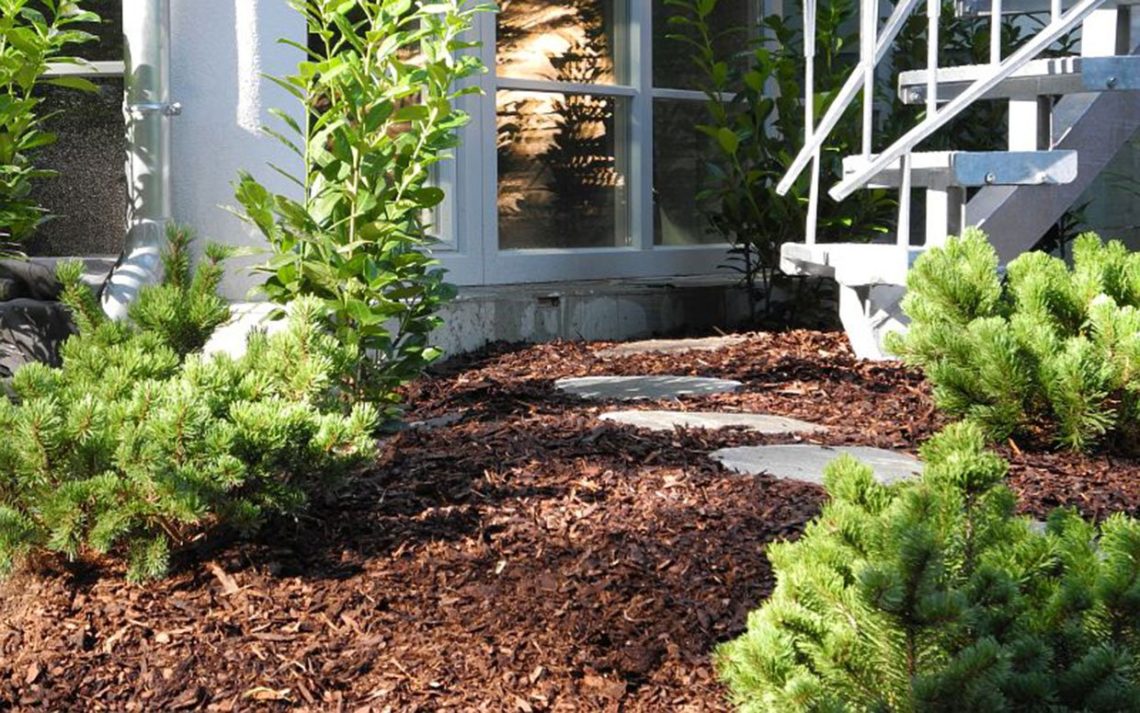As your plants struggle to stay hydrated in the heat of summer, there is one simple thing you can do for them now that will help in many ways over the long run—mulch. When you mulch your garden and even your houseplants, you mimic Mother Nature, who mulches forest floors with fallen leaves, pine needles and branches.
The benefits of mulch for your summer garden are many. Mulch greatly conserves soil moisture by cutting down on surface evaporation and cooling soil temperatures. This reduces the need for watering by 35-45 percent. The protective layer from mulch shields and feeds the good bacteria in the soil that increase disease and pest resistance and lead to prolific plant growth. Mulch also cuts down on weeds and prevents compaction and erosion.
Follow these steps for mulching your summer garden.
Choose your mulch. A variety of mulch options exist. What you choose will depend on the look you want and what’s available. Some common mulches include bark, either chipped, ground or shredded. Bark makes an attractive addition to the garden and breaks down slowly. Other choices include leaf mold (decomposed leaves), aged grass clippings and compost, all of which feed and condition the soil over time. Peat moss works well for mulching acid-loving plants like blueberry, azalea and hydrangea. Hay, straw, gravel and crushed stones are other options. The latter are best used in rock gardens, as they don’t conserve much water.
Remove weeds. Mulch cuts down on the germination of weeds, but it won’t get rid of existing weeds. Prior to mulching, weed the area, making sure to take out even the smallest of weeds by the roots. At this time also remove any debris.
Soak the area. Before putting down the mulch, thoroughly water the area to be mulched. This will lead to the soil retaining moisture once you add the mulch.
Apply the mulch. Add a 2-4-inch-thick layer of mulch to conserve water and inhibit weed growth. The type of mulch you use will dictate how thick you’ll be able to apply it. Bark tends to go on thick, whereas compost and gravel produce thinner layers. It’s also possible to combine mulch types. For instance, apply a 1-inch layer of compost followed by a 2-inch layer of bark.
Water again. Once the mulch is all down, seal in moisture and prevent erosion by thoroughly watering the surface of the mulch. Water will weigh down the mulch so it makes good contact with the soil. Keep the surface of the mulch moist.
Julie Bawden-Davis is a garden writer and master gardener, who since 1985 has written for publications such as Organic Gardening, Wildflower, Better Homes and Gardens and The Los Angeles Times. She is the author of seven books, including Reader’s Digest Flower Gardening, Fairy Gardening, The Strawberry Story, and Indoor Gardening the Organic Way, and is the founder of HealthyHouseplants.com.

